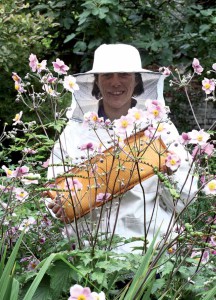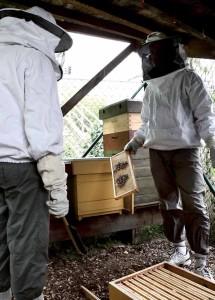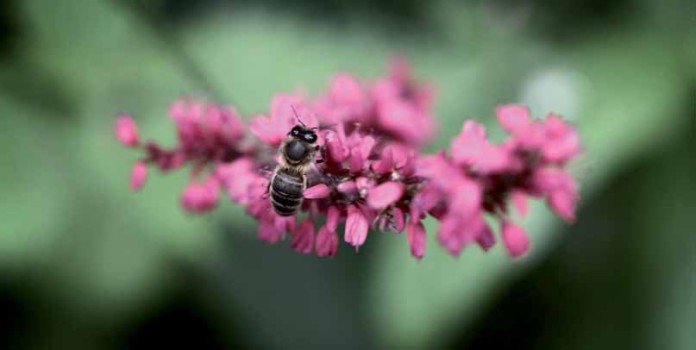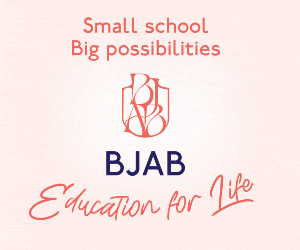Often perceived as a strictly rural craft, bee-keeping is fast appealing to ecologically-minded city dwellers. Teresa Küchler reports on a fashionably eccentric urban trend allowing city folk to relate to nature while enjoying the buzz of the big city. Photos by Yvan Barbera

The beehives in Marc Wollast’s garden in WatermaelBoitsfort, a quiet residential Brussels suburb, are bustling with commotion even on a somewhat cool and rain-laden summer evening. The honey bees are returning home after a long day’s work collecting nectar from nearby trees, bushes and flowers – up to a five km radius of their crowded, swarming nest, although each is capable of travelling much farther to bring back a single 10mg load of pollen.
“As long as I don’t stand right in their flight path, they usually won’t even give me a glance,” Wollast explains calmly, surrounded by small creatures with needle-sharp stings.
Bees are completely compatible with city life
A tax accountant turned full-time environmentalist, Wollast confesses to one of his neighbours being upset about the bees when he began. “But bees are completely compatible with city life,” he says. “My daughter is nine, and we have always kept bees, even when she was a baby. She has never been stung.”
QUEEN OF THE SCENE
Each hive houses some 60,000 pedigree bees. This evening, the mood is rather gloomy; the bee season is ending, and heaps of male bees, or drones, lie flopping about outside the hive, slowly dying. A worker bee drags a starved and weakened drone, helplessly struggling for life, towards the edge of the hive, and mercilessly pushes him over the edge.
“When the drones have done their job, which is to mate with the Queen, and only that, they become useless,” explains Wollast.
There’s one Queen per hive, the mother of most, if not all, of the bees in the hive; she is the only bee that lays eggs, up to 2,500 every day. The worker bees are female and never sleep, they only nap. Each worker has a lifespan of about 45 days and makes 1/12th of a teaspoon of honey in her lifetime, a product endowed with many medicinal and life-enhancing properties.
GENTLE GENES
Increased demand for locally produced and organic food has made more people want to cultivate in the city, transforming back gardens and patios into lush havens filled with flowers, fruit and vegetables. But reliable pollination is a must for bountiful crops, and the best pollinators around are bees. Buying them is a bit like buying pedigree dogs: they come with reference to their lineage, or genealogical descent. Apiarists – or bee experts – maintain it is bad practice to keep breeding from the same line of bees, just as for humans. Additionally, city bees should ideally stem from gentler ancestors than the colonies placed in large green areas with few human visitors.
In Brussels, there are some 200 city beekeepers and 600 hives. Wollast’s own organization, Apis Bruoc Sella, with the principal aim of raising awareness about food and biodiversity issues rather than recruiting beekeepers, runs tours of beehives and workshops on honey harvesting. He has placed three hives on top of the Belgian capital’s administration centre on the busy Boulevard Anspach. From the top of this 12-storey building, the bees not only have a spectacular view of stressed shoppers and traffic jams, but also of flower-filled gardens, balconies and city parks where nectar is aplenty.
ROOFTOP HONEY
The Sofitel hotel on Place Jordan at the centre of the EU quarter will from next year offer guests home-harvested rooftop honey at the breakfast buffet; nearby, across the Leopold Park, the EU’s Economic and Social Committee will soon also welcome new tiny tenants. Despite a growing interest in urban beekeeping, all is not well in the apian world. Having produced honey from flowering plants for millions of years, bee populations are being devastated by the mysterious Colony Collapse Disorder (CCD), which decimates whole bee communities and has been blamed on everything from a virus or mites to pesticides, GMO crops or climate change. Researchers simply cannot explain why bees are succumbing to all kinds of different plagues and miseries, which, earlier, they could resist. According to a study by the European food safety agency EFSA, the bee population in Europe has diminished since the mid-noughties by an average of 10% per year. In some European regions, more than 80% of bees have vanished.
The annual value of pollination, according to Ashok Khosla, President of the International Union for Conservation of Nature (IUCN), is estimated to be worth around US $1.3 billion. Of 100 crop species that provide 90% of the world’s food, seventy are pollinated by bees. On a typical continental breakfast table, not only would honey disappear if there weren’t any more bees, but also coffee and orange juice. Bees pollinate both coffee and orange trees. The price of milk would soar, since bees pollinate most types of animal feed; without them, farmers would have to feed livestock, such as cows, with more expensive food such as cereals. But that would only be a problem for a little while, since most kinds of cereal would soon disappear too.
Big agri-companies, mostly in the US but also increasingly in Europe, now have to lease beehives with domesticated bees to pollinate their fields, because wild bees are no longer to be found. Others take to hand pollination, where student workers transfer pollen between plants or fruits, using a tiny artist brush or cotton swab – costly and cumbersome work. Many urban beekeepers are therefore on a mission, hive by hive, to help bee communities survive.
AIR MILES

A more cheerful reason to admire urban apiculture is what it has done to increase the variety of jars, pots and flavours offered in specialized city honey shops and chic cafes. For the inveterate, appreciation of honey is seen akin to having an awareness of good wine, and there is growing consensus that bees living in cities produce better honey than those kept in the countryside, because of the varied nectar available. Bees are the only insects that produce food that humans eat.
Parallel to the railway embankment dividing the Brussels communes of Ixelles and Etterbeek, beehives complement the long, narrow communal garden planted with flowers, fruit and vegetables – many of them old and rare varieties – tended by local residents. Enthusiast Gérard Leriche explains that honey from urban bees is multifloral, a mixture of up to 15 different pollens, compared to the monofloral honey from intensively cultivated countryside bees with access to just single crops. “One kilo of honey is the result of bee visits to between four and five million flowers,” he says. And the collective hive will have had to fly more than 100,000 miles to collect it.
SCARCE RESOURCE
Several streets away from the Etterbeek embankment gardens, Catie Thorburn keeps two hives in her own flower-decked back garden and a further five in the equally attractive office garden of the Generation Europe Foundation, of which she is founder and president. Foundation board member Elise Bouvy is studying for a Masters in managing sustainability at the UK’s Schumacher Institute (named for economist E. F. Schumacher, author of the iconic Small is Beautiful). With British bees dying out faster than their continental cousins, honey harvested from the Institute’s residential college garden is not available for breakfast, says Bouvy. “It is treated as a scarce resource, and is only made available for medicinal purposes,” she explains.
Catie Thorburn’s neighbour, Dianna Rienstra, claims to be able to taste the flowers from her own garden when she opens a jar of what she describes as: “Liquid gold from Catie’s bees.” Rienstra doesn’t keep bees herself but helps with the honey harvest. “The taste of the honey is complex and changes as spring and summer unfold,” she says. “It’s particularly delightful to open a jar in the grey winter months. Beekeeping also brings neighbours closer together – it builds community.”
• Additional reporting by Together journalist







